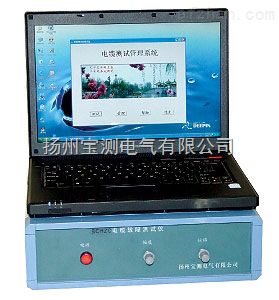
Cable fault test procedures and issues
1, the basic steps of high voltage cable fault testing
The basic steps of the cable fault test: In general, follow these steps to test:
(1) Find out the cause of the fault and the basic condition of the cable. For example, whether it is caused by a fault in the operation or by a pre-test. Is it a new cable or a cable that takes a long time to run? The approximate length of the cable has no connectors in the middle of the cable. Has there been a failure, the cable is buried directly in the cable trench, as well as the cable type and so on.
(2) It must be clear that both ends of the cable must be disconnected from other lines to ensure that the cable is not charged and the environment around the cable is in a safe state.
(3) The tester must pay attention to, each time before connecting with the cable, connect the phase line of the cable to the ground for short-circuit discharge. When discharging, one end of the short-circuit line must be grounded first, and the other end should be connected to each phase of the cable to discharge. For other electrical appliances, such as capacitors, test transformers, etc., be sure to discharge and connect the wiring before removing the connection cable. In short, to form the operating habits, not afraid of trouble, before each operation, first pay attention to the operation of the electrical connection to the circuit, discharge and then operate.
(4) When testing, firstly use the low-voltage pulse function of the flash detector to perform full-length test on each phase of the cable to see if the test waveforms are the same in the three relative armored tests. For most high-impedance faults, the test waveforms for each phase are the same. For low-impedance faults and high-impedance faults with open-phase faults, the fault phase test waveform does not match the full length of the test cable, so that the fault distance can be directly measured with low-voltage pulses.
(5) When using the high-voltage flashover test, whether the cable fault is a high-impedance fault or a low-impedance fault, the high-voltage flashover method can be used for testing. For low-resistance or disconnection faults that can directly measure the fault distance with low-voltage pulses, high-voltage flashovers are usually used for verification tests and precise determination of fault points.
During the high-voltage flashover test, it should be noted that no matter whether the cable is single-phase fault or multi-phase fault, when testing one fault phase, other cable phase lines should be short-circuited with the cable armor to reduce the interference of other cables and improve Test accuracy.
(6) After the high-voltage flashover test is completed and the fault distance is determined, fault fine point determination can be performed. When the sound-magnetic synchronous fixed point instrument is used, fault fixed point and path detection work can be performed synchronously.
2, pay attention to test safety issues
Fault test safety issues are divided into tester safety and equipment safety. The safety of testers should pay attention to the grounding and discharging of the instrument. The safety of the equipment is mainly the correct wiring. In addition to operating according to the instructions, pay attention to understanding the following points:
(1) "One-point grounding" and "Multi-point separation grounding": When the flashmeter is tested by high-voltage flashover, the high-voltage loop is required to be grounded, that is, the ground of the high-voltage test transformer and capacitor is directly connected to the cable armor (armored). To ground), use the shortest line to directly connect the equipment, not to connect the cable too long. This is mainly to ensure the standard of the test waveform and facilitate analysis. For instruments such as the operation box and the flash detector that we have to operate directly, the protective grounding wire can be connected to the ground separately. Generally, it should not be connected with the high-voltage grounding wire. This ensures that if the high-voltage grounding wire is not connected properly, Operators' safety.
(2) Safety discharge problem: When the high-voltage flash test is performed, the high voltage pulse capacitor and the test cable are mainly used for high voltage. Use a special discharge rod with resistance to discharge. Direct discharge with a grounded insulating rod, the inrush current will affect the service life of the high voltage pulse capacitor.
(3) DC power supply: Using a flash detector with a DC power supply function, try to use a DC power supply for high-voltage test when testing, so as to prevent the impact of the high-voltage inrush current through the AC power cable on the flash meter.
The characteristics of the single-lever faucet are simple and easy to use, and the controllability is relatively strong, which is very popular with the majority of consumers; The double-handled faucet can bring users a more delicate water temperature feeling, and many friends who are more sensitive to temperature especially like this style of faucet; The faucet with a 90-degree switch can change the hot and cold water mode by itself, which is also a style that many consumers like now.
Shower faucet: It is installed above the shower room and is used to open hot and cold mixed water. The valve body is also mostly made of brass, and the appearance is chrome plated, gold plated, etc. The ways to open and close the water flow include screw lifting type, ceramic valve core type, etc. Shower faucets are available in hose showers and flush showers: thermostatic faucets with special functions, faucets with filter devices and faucets with pull-out hoses, etc., all of which have different requirements for installation.
Single Handle Shower Mixer,Single Handle Shower Mixer Faucet,Single Handle Shower Faucet,Single Handle Shower Mixer Taps
WENZHOU CHENKAI SANITARY WARE CO.,LTD , https://www.cnchenkai.com